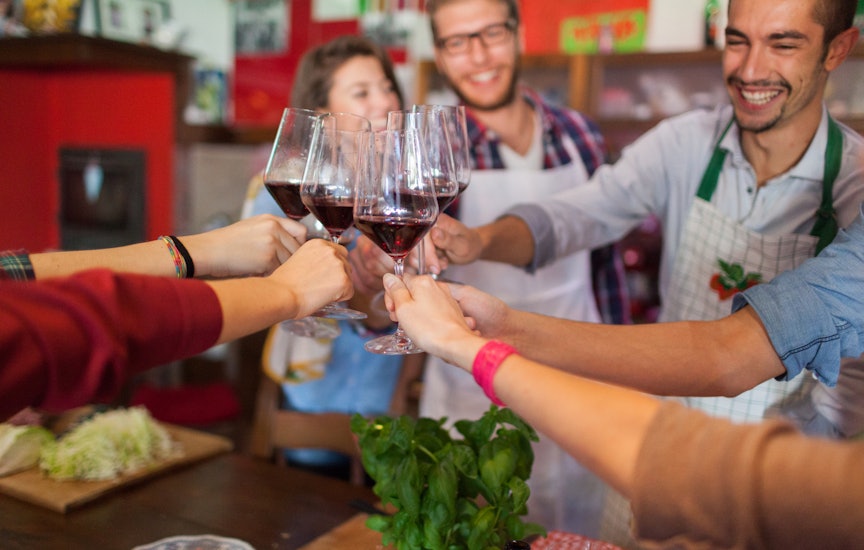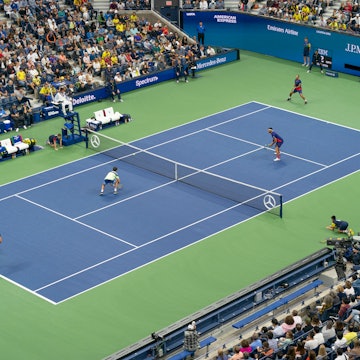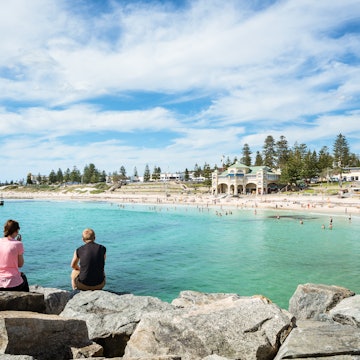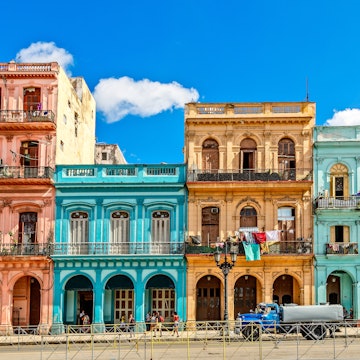
Umbria’s strong, earthy flavors reflect the region’s distinct culture
Sponsored by

Nov 22, 2023 • 5 min read

Umbria’s deeply-rooted culinary traditions are a reflection of the beautiful natural landscapes of the region © Getty Images
Located in the heart of central Italy, Umbria is a region rich with dense forests, rolling hills, historic towns, and some of the best food the country has to offer.
The unique terroir has given rise to specialties like cured meats, earthy truffles, flavorful olive oils, and full-bodied wines – delicacies to delight the taste buds of travelers. Here’s our guide to the best bites the region has to offer:

Smoked and roasted
Start your visit in the southeastern corner of Umbria in the historic walled city of Norcia, found within Monti Sibillini National Park. For centuries the city’s norcini, or pork butchers, have been producing top-quality cured meats, salumi, and sausages. Thanks to the large oak forests in this part of Italy, local pigs have a diet rich in acorns and local herbs which add flavor to the meat.
The land around Norcia is also home to wild boar, which is sustainably hunted and features in the local cuisine. When in Norcia seek out a norcineria, speciality butchers who create the pork products for which this region is famous. Some of the dishes to look for on restaurant menus that highlight these pork products include porchetta, a roasted pork dish, and pasta alla norcina, pasta with a rich sausage and cream sauce.

Lentils and truffles
From Norcia head to nearby plains of Castelluccio, in the Apennine Mountains, famous for its lentils. The small, tender lentils are grown at nearly 5000 feet (1500m). The region is so important to the crop that the lentils were awarded the IGP designation indicating a protected geographical origin. In June the plains of Castellucio are ablaze as wildflowers bloom around the lentil fields, with the lentils then being harvested in July. Look for these lentils transformed into rich, nutty soups, often flavored with the pork from the region.
Umbria’s forests are also fertile ground for producing prolific amounts of truffles year round – Scorzone truffles can be found in many regions in the summer months, while the rarer white truffles can be found in the winter, mainly in the area of Città di Castello. From Castelluccio head west to the regions around Spoleto and Terni to find an abundance of these flavorful fungi. For a hands-on experience, join an experienced truffle hunter and truffle hunting dogs as they search the forests for these morsels. Truffles can be found widely on menus in Umbria – shaved over pasta or eggs, in risotto and sauces, and as flavoring for salumi, cheese, and olive oil.

A cornucopia of produce
Leaving the truffle-rich zone behind, head north to the hills between Spoleto and Assisi to find Umbria’s main olive oil producing region. The production of olive oil in Umbria dates to the Etruscans and Romans, and today the city of Trevi is considered the region’s olive oil capital.
Trevi sits at the heart of the Sentiero degli Ulivi, or olive trail, a 45-mile (75km) path that winds through the olive groves, linking the major towns of the region together. In Trevi there is the Museo della Civiltà dell’Ulivo, a museum dedicated to the history of olive oil production in the region, and outside of the city visitors can stop at an olive oil mill (called a frantoio) to watch olive oil production (in season), and also sample the local product.
You may also see two very special vegetables in markets or on restaurant menus. There is a unique variety of celery grown only in the region known as sedano nero di Trevi or “black celery” for its dark stems and leaves. A small handful of growers nurture this varietal which is recognized by the Slow Food Presidium, an organization that works to protect native foods and traditional growing practices. This local delicacy is often served as black celery parmigiana, served fresh from the oven with cheese and a meat sauce.
The region is also known for onions from Cannara which are grown in rich clay soil and are popular for their sweetness and tenderness. Generations of onion growers, known as cipollari, keep the tradition of this agricultural product alive. There are festivals to celebrate the harvest of both the Cannara onions and the black celery – the former in mid-September and the latter in mid-October – each complete with food stalls and other attractions.

Savor the vintages
No food-focused visit to Umbria would be complete without visiting some of the region's top wine producing regions. From Trevi it is only a short drive to Montefalco, an historic hilltop town surrounded by vineyards. Montefalco is best known for its production of Sagrantino, a bold red wine, which has DOCG designation, an indication reserved for the highest quality wines in Italy and a guarantee of their origin.
Continuing further west you reach the wine-producing area around Orvieto which is responsible for the majority of Umbria’s production, and is best known for its white wines. The land around Orvieto is composed of volcanic rock called tufo which creates a unique terroir for the wines of the region. Caves dug into the tufo have been the perfect place to store and age wines since the time of the Etruscans. Some vineyards still age their wines in these historic caves today. Many of the vineyards around Montefalco and Orvieto are open for visitors and provide tours and tastings.
For even more exquisite vintages, explore the fortified medieval village of Torigiano, whose wines were one of the first in Italy to obtain the DOC seal, and the Colli del Trasimeno on the banks of the eponymous lake.

Delicacies from the water
For the last stop on our culinary tour head north to the area around Lago Trasimeno, Italy’s fourth-largest lake. Umbria is the only landlocked region in central Italy, and for centuries this lake has provided a variety of fresh-water fish which have diversified the local cuisine. Today a collective of more than 50 fishermen work to sustainably fish carp, pike, bass, perch, and eel. You will find the fish transformed into dishes like carpa regina in porchetta, a roasted carp speciality, or tegamaccio, a fish stew served in an earthenware pot.
Umbria’s deeply-rooted culinary traditions are a reflection of the beautiful natural landscapes of the region. The people of Umbria take pride in their local foods, celebrating the flavors in dishes found only in the region and in festivals celebrating the producers and their harvests. A journey through the region will introduce visitors to all the delicious tastes that Umbria has to offer.
Sponsored by Regione Umbria
As a travel entertainment and inspirational media outlet, we sometimes incorporate brand sponsors into our efforts. This activity is clearly labeled across our platforms.
This story was crafted collaboratively between Regione Umbria and Lonely Planet. Both parties provided research and curated content to produce this story. We disclose when information isn’t ours.
With sponsored content, both Lonely Planet and our brand partners have specific responsibilities:
-
Brand partner
Determines the concept, provides briefing, research material, and may provide feedback.
-
Lonely Planet
We provide expertise, firsthand insights, and verify with third-party sources when needed.















